 App Task Challenges – helpful free step-by-step sheets from Craig Badura @mrbedura and others, for downloading and printing out, to guide learners (or teachers) in the use of a number of popular mobile apps, such as Pic Collage, wordcloud creator, camera app, shadow puppet edu and many more. Each sheet guides a user through the steps to make use of an app for a specific task. And there are suggestions about how the app can be used in the curriculum
App Task Challenges – helpful free step-by-step sheets from Craig Badura @mrbedura and others, for downloading and printing out, to guide learners (or teachers) in the use of a number of popular mobile apps, such as Pic Collage, wordcloud creator, camera app, shadow puppet edu and many more. Each sheet guides a user through the steps to make use of an app for a specific task. And there are suggestions about how the app can be used in the curriculum
http://www.thedigitaldogpound.com/app-task-challenges.html
9 Tips for a Successful School BYOD Implementation
 9 Steps to a successful school BYOD implementation – a blogpost by Sarah Cornelius which provides advice for schools moving to have pupils use their own devices to support their learning in the classroom. This sets out 9 steps which include ensuring that everyone understands what is hoped to be achieved and all the positive benefits which incorporating multiple types of device can bring to learning – but also recognising the challenge this poses, with suggestions as to how these challenges can best be resolved. It explains the need for everyone to have an understanding of device-neutral applications with a focus on the task to be accomplished, and users choosing the app or webtool which best meets the need specific to the user’s device. Also how helpful it is having a cloud-based platform which is common to all users – Scottish schools all have access to the range of tools and resources via Glow, providing every learner and member of staff with that cloud-based platform.
9 Steps to a successful school BYOD implementation – a blogpost by Sarah Cornelius which provides advice for schools moving to have pupils use their own devices to support their learning in the classroom. This sets out 9 steps which include ensuring that everyone understands what is hoped to be achieved and all the positive benefits which incorporating multiple types of device can bring to learning – but also recognising the challenge this poses, with suggestions as to how these challenges can best be resolved. It explains the need for everyone to have an understanding of device-neutral applications with a focus on the task to be accomplished, and users choosing the app or webtool which best meets the need specific to the user’s device. Also how helpful it is having a cloud-based platform which is common to all users – Scottish schools all have access to the range of tools and resources via Glow, providing every learner and member of staff with that cloud-based platform.
The problem is not the device
 “Quit blaming the devices” is a blogpost by John Spencer which sets out a reasoned discussion about varying views by teachers starting on the journey of having their pupils using mobile devices in their classrooms.
“Quit blaming the devices” is a blogpost by John Spencer which sets out a reasoned discussion about varying views by teachers starting on the journey of having their pupils using mobile devices in their classrooms.
http://www.spencerideas.org/2015/12/quit-blaming-devices.html
It’s not a technology issue
 It’s not a technology issue! A blogpost by Eric Sheninger which encourages educators to reflect on how they view mobile device use in the classroom. How do we as educators now use mobile devices, what example are we setting for our learners? How should we view their use, how do we change the culture of our school to embrace them as tools to support our learners in their engagement with their learning?
It’s not a technology issue! A blogpost by Eric Sheninger which encourages educators to reflect on how they view mobile device use in the classroom. How do we as educators now use mobile devices, what example are we setting for our learners? How should we view their use, how do we change the culture of our school to embrace them as tools to support our learners in their engagement with their learning?
“Technology still gets a bad rap in many education circles. Perception and lack of information influence the decision making process. This ends up resulting in the formation of rules and policies that severely restrict or prohibit student use of mobile technology and social media as tools to support and/or enhance learning.”
“The process of effectively integrating devices begins with our ability to model appropriate use while reinforcing student expectations for the role of mobile devices… to ensure that devices afford students the opportunity to support and/or enhance their learning”
Click on the link below to read the full blogpost
http://esheninger.blogspot.co.uk/2015/10/its-not-technology-issue.html
European Schoolnet Guide to BYOD for School Leaders
Bring Your Own Device (BYOD) Guide for School Leaders  – a new publication by the European Schoolnet’s Interactive Classroom Working Group (ICWG).
– a new publication by the European Schoolnet’s Interactive Classroom Working Group (ICWG).
“The guide is designed to provide school leaders, local education authorities and other decision makers with information on BYOD trends, options and examples from schools in European countries and in other parts of the world. The guide is intended to be a continuing source of information and further case studies will be added to keep on track with latest developments.”
Apps for those with disabilities
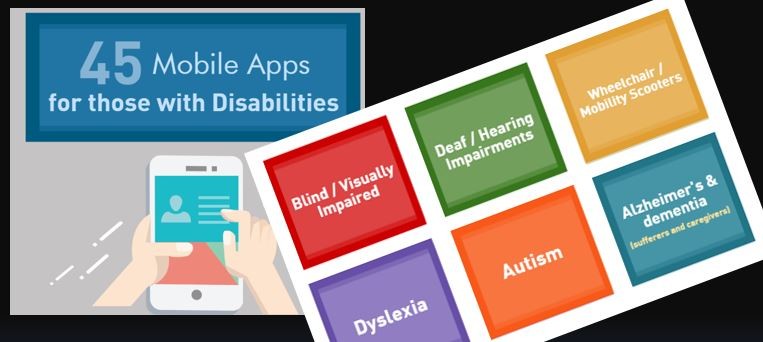 45 Mobile apps for those with Disabilities – a blogpost listing and describing apps for mobile devices for those who are blind or visually impaired, deaf or have hearing impairments, who use a wheelchair or mobility scooter, are dyslexic, who are autistic and for those who either suffer from or care for those with dementia or Alzheimer’s disease.
45 Mobile apps for those with Disabilities – a blogpost listing and describing apps for mobile devices for those who are blind or visually impaired, deaf or have hearing impairments, who use a wheelchair or mobility scooter, are dyslexic, who are autistic and for those who either suffer from or care for those with dementia or Alzheimer’s disease.
Each app is illustrated, the function described, and a direct link to the appropriate app store is provided for each app.
An introduction to BYOT – Bring Your Own Technology – for parents
Bring Your Own Device or Bring Your Own Technology or Use Your Own Device
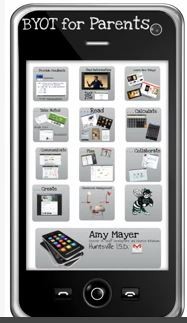 BYOT for Parents – an explanatory video about Bring Your Own Technology by US educator Amy Mayer, aimed at parents/carers, describing different ways in which mobile technology might be used in a classroom situation to support learning and teaching. It gives examples of situations and specific tools and how they could be used in an educational context. The examples are specific to a particular school district in the USA at a particular moment in time, however the principles (feedback, researching, collaborating, communicating, note-taking, creating, demonstrating understanding and more) can generally be applied elsewhere with different tools.
BYOT for Parents – an explanatory video about Bring Your Own Technology by US educator Amy Mayer, aimed at parents/carers, describing different ways in which mobile technology might be used in a classroom situation to support learning and teaching. It gives examples of situations and specific tools and how they could be used in an educational context. The examples are specific to a particular school district in the USA at a particular moment in time, however the principles (feedback, researching, collaborating, communicating, note-taking, creating, demonstrating understanding and more) can generally be applied elsewhere with different tools.
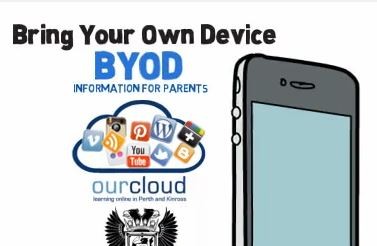 BYOD for Parents pkc – an explanatory video by Perth and Kinross Council explaining the introduction of Bring Your Own Device and what that means for learners in a classroom context.
BYOD for Parents pkc – an explanatory video by Perth and Kinross Council explaining the introduction of Bring Your Own Device and what that means for learners in a classroom context.
BYOD in the 21st Century – an short video by Canadian educator Marc-André Lalande presenting some of the advantages and limitations of this concept for education.
Apps for Good
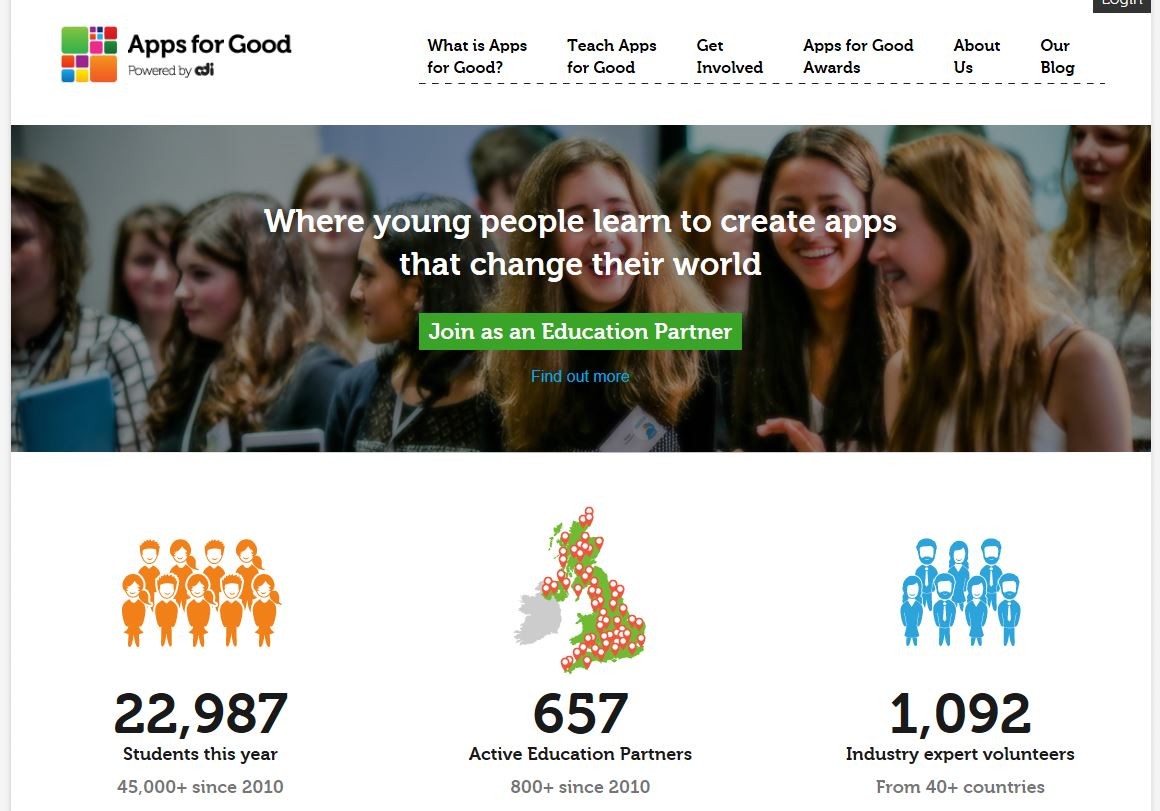 Apps for Good – if you are looking for a scheme by which your learners can be creative in developing apps for mobile devices which have a real world application, then Apps for Good would be worth a look. Apps for Good provides a curriculum-mapped programme of activities with supporting resources to help engage pupils in seeing a need for an app which can make a difference, through using resources to create an app to address this need, to developing marketing skills.
Apps for Good – if you are looking for a scheme by which your learners can be creative in developing apps for mobile devices which have a real world application, then Apps for Good would be worth a look. Apps for Good provides a curriculum-mapped programme of activities with supporting resources to help engage pupils in seeing a need for an app which can make a difference, through using resources to create an app to address this need, to developing marketing skills.
The video below by Wick computing teacher Chris Aitken describes Apps for Good and the impact on his teaching and on his learners.
The video below is an interview with pupils from Wick High school explaining about the app they developed as part of Apps for Good.
The video below also provides interviews with teacher Chris Aitken and pupils at Wick High school about their involvement in Apps for Good.
https://youtu.be/EMGnfsP5kNM
5 back to school bits of advice for smartphone-carrying pupils (1 for parents too)
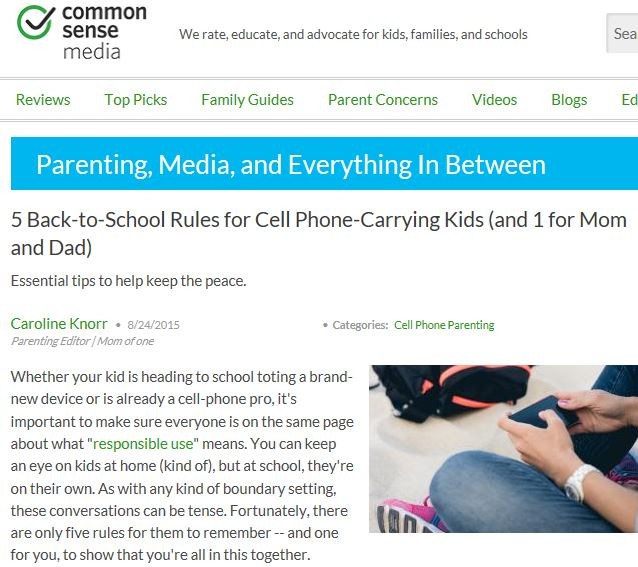 5 back to school bits of advice for smartphone-carrying pupils (and 1 for parents/carers too) – helpful guidelines from Common Sense Media for pupils who are starting back to school with their mobile device or smartphone. Links also to additional resources and games to help everyone make best use of their mobile devices.
5 back to school bits of advice for smartphone-carrying pupils (and 1 for parents/carers too) – helpful guidelines from Common Sense Media for pupils who are starting back to school with their mobile device or smartphone. Links also to additional resources and games to help everyone make best use of their mobile devices.
Connected Learning – the Preston Lodge High School example
Do you wonder how other schools are using mobile devices to support learning and teaching? Well, East Lothian Secondary Schools now offer wireless learning for all young people. This means that young people can use school or personal devices to access a very wide range of learning materials online. This new opportunity creates important new responsibilities for young people.
At Preston Lodge High School in East Lothian they’ve put together a guide and animated video explaining to pupils how they manage the use of the mobile devices brought by pupils. Some tools and resources they use may be specific to their school but the general principals and guidance may be found to be helpful to other schools to consider. You can see a description at the link below:
http://www.edubuzz.org/prestonlodge/2015/08/19/connected-learning/
You can also watch the Preston Lodge High School Connected Learning animated video below (or click on this link):
https://www.youtube.com/watch?v=Y_3rAiElRLM
